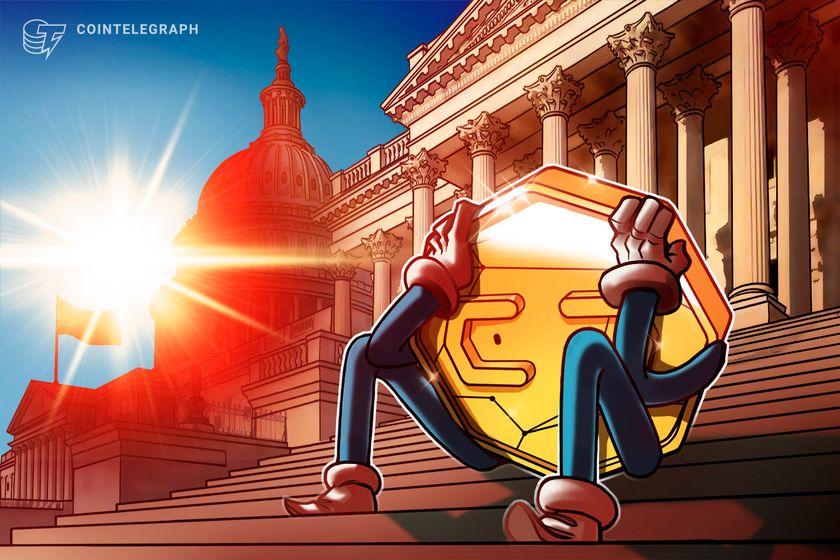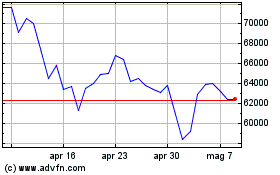

The crypto industry’s sway in Washington DC has made it more
likely that the industry will get beneficial legislation, but it’s
also creating problems.
Concerns of regulatory capture — a situation in which regulators
or lawmakers are co-opted to serve the interests of a small
constituency — have grown as crypto lobbying gains influence in
Washington.
The risks of regulatory capture are twofold: First, the public
interest is shut out from policy-making in favor of a single
industry or company, and second, it can make regulators blind to or
paralyzed by economic risks.
Now, not even three months into Trump’s presidency, American
lawmakers and industry crypto observers have voiced concerns that
this regulatory capture could not only negatively affect the
country but curb competition within the crypto industry as
well.
Regulatory capture in the battle for crypto policy
In a March 28 letter, prominent members of the US Senate Banking
Committee and Committee on Finance addressed
Acting Comptroller Rodney Hood and Michelle Bowman, Chair of the
Federal Reserve Board of Governor’s Committee on Supervision and
Regulation.
The letter specifically addresses the launch of
USD1, a stablecoin project from the Trump family’s
decentralized finance project World Liberty Financial (WLFI), as
Congress considers GENIUS Act legislation on stablecoins.
Related: Trump’s crypto project launches stablecoin on
BNB Chain, Ethereum
The senators suggest there are opportunities for regulatory
capture and conflict of interest. “President Trump may review any
actions the OCC takes with regard to USD1’s stablecoin application.
He would be positioned to intervene in and deny the OCC from
promulgating stablecoin safeguards, or force the agency to refrain
from initiating any enforcement actions against WLF.”

Son Eric Trump pumps his father’s memecoin ahead of the
inauguration. Source: Eric
Trump
They added that he could attempt to intervene or deny assistance
to USD1’s competitors and that the GENIUS Act provides no
provisions to prevent such conduct.
Crypto industry observers have also echoed concern over a single
entity's undue influence over policy when it comes to Coinbase’s
influence in Washington’s development of stablecoin policy.
In January, Coinbase CEO Brian Armstrong
signaled that
his firm would be willing to delist Tether (USDT), the world’s
largest stablecoin, if the version of the stablecoin bill under
consideration in Congress became law.
Under those terms, USDC, in which Coinbase is a major
shareholder, would essentially be fencing out its largest
competitor from the US market.
Castle Island Ventures partner Nic Carter cried foul,
stating that “Regulatory
capture is poison. Reminds me of what SBF used to do.”
Related: SBF
always played both sides of the aisle despite new Republican
plea
At the time, Vance Spencer, founder of crypto venture firm
Framework Ventures, said that it was “a
blatant attempt at regulatory capture by US players done at the
expense of US national interest.”
“The future of stablecoins can be US dollar-based only if we
allow a broader competitive set of stablecoin issuers to flourish
and deny gatekeeping/gaslighting by those interested in regulatory
capture,” he concluded.
George Selgin, senior fellow and director emeritus of the Cato
Institute's Center for Monetary and Financial Alternatives, told
Cointelegraph that the Bitcoin reserve is another clear example of
the crypto lobby’s influence over the regulatory
process.

Trump signs the Bitcoin reserve executive order.
Source: David Sacks
“It's unlikely that anyone would have considered it desirable,
let alone necessary, for the US government to maintain digital
asset stashes — in fact, there's no good reason for its doing so —
had it not been for intense pressure from cryptocurrency
enthusiasts,” he said.
Regulatory capture is old hat in Washington lawmaking
Different lobbies influencing policymaking in Washington are
nothing new, so much so that “regulatory capture” to the layman
would seem to describe business as usual.
Selgin said that the Biden administration’s approach to crypto
was equally an example of regulatory capture, just in favor of
traditional financial firms that, with their lobbying efforts,
wished to limit competition from industry upstarts.
“Regulators' relatively hostile stance toward crypto [under
Biden] was no less evidence of regulatory capture than their more
indulgent stance toward it today. The main difference was in who
did the capturing,” he said.
“Financial regulatory capture is an old story; only
some new players are now proving to be adept hunters.”
When asked how one would differentiate between legitimate
industry advocacy and regulatory capture, Selgin said, “I don't
think you need to. First of all, the line between them is very
thin.”
Industries rarely take complete control of regulators due in
part to the fact that individual firms within an industry have
different ideas about what ideal regulation looks like, said
Selgin.
Furthermore, any kind of successful advocacy “‘captures’
regulators to some extent” if only by virtue of the fact that it
makes them change their beliefs about how best to regulate.
What is to be done?
The question remains then: is regulatory capture just to be
accepted as a natural part of the policymaking process?
Some academics have suggested creating entirely new government
bodies to deal with the problem. Gerard Caprio, William Brough
professor of economics, emeritus at Williams College,
proposed the
creation of an expert panel dubbed a “Sentinel” to oversee
regulator behavior.
But such proposals face nearly impossible headwinds, not only
because of their technical complexity, but due to the simple fact
that lawmakers have no incentive to set up an organization that
oversees them.
Related: Trump’s CFTC pick Brian Quintenz gets crypto’s
foot in the revolving door
According to Selgin, the ultimate determination is not “whether
or how the industry manages to influence regulators. It's whether
the resulting regulatory regime serves the public interest [...] If
a regulation is harmful, it's harmful whether it was lobbied for or
not.”
And the public’s interest in crypto is getting harder to see.
Polls about crypto
sentiment, trust and ownership vary wildly,
and the Trump administration’s personal interest has
done little
to endear it to skeptics or middle-of-the-road voters.

Some industry surveys claim that a whopping 70% of Americans
own crypto. Source: NFT
Evening
Even crypto lobbyists admit that the (barely) bi-partisan drive
for crypto is driven by a desire to appease the crypto industry’s
deep pockets ahead of the 2026 midterms.
Dave Grimaldi, executive vice president of government relations
at Blockchain Association, said, “There
are [...] pro-crypto candidates who won and were funded by our
industry and had votes coming to them from crypto users in their
district. [...] And then there were also incumbent, sitting members
of Congress who lost their seats because they were so negative for
completely unnecessary and illogical reasons.”
Little can be done until lawmakers and regulators agree there is
a problem to solve and exert the political will to solve
it.
Magazine: Arbitrum co-founder skeptical of move to based
and native rollups: Steven Goldfeder
...
Continue reading Crypto has a regulatory capture
problem in Washington — Or does it?
The post
Crypto has a regulatory capture problem in
Washington — Or does it? appeared first on
CoinTelegraph.
Grafico Azioni Bitcoin (COIN:BTCUSD)
Storico
Da Mar 2025 a Apr 2025

Grafico Azioni Bitcoin (COIN:BTCUSD)
Storico
Da Apr 2024 a Apr 2025
